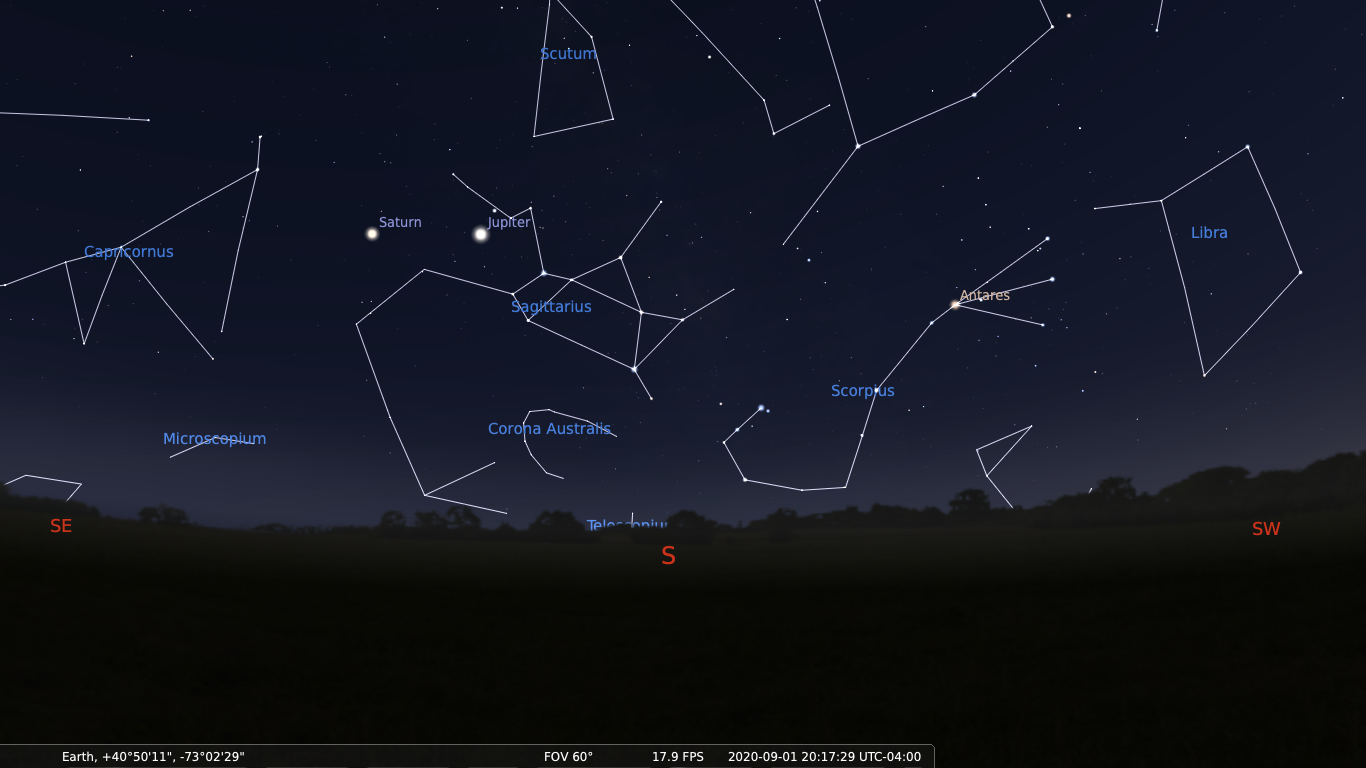
Using ESO’s Very Large Telescope Interferometer astronomers have constructed this remarkable image of the red supergiant star Antares. This is the most detailed image ever of this object, or any other star apart from the Sun. It should be pointed out that this is the best image of the surface and atmosphere of any star other than the Sun. Image and study: European Southern Observatory.
Related videos available at the foot of the page.
With this third in installment in our ten-part series on the ten brightest stars we’re pleased to present the red supergiant star Antares, the Heart of the Scorpion. Derived from the Greek, the star’s name refers to it as a “rival to-Ares” (“opponent to-Mars”) with a Bayer Designation of α Scorpii. A star’s Bayer Designation, a system developed by German astronomer Johann Bayer in 1603, describes the star’s brightness or magnitude within its respective constellation. Stars in a given constellation are classified by brightness according to the Greek alphabet, starting with α (Alpha) as the brightest and in descending order according to brightness through the Greek alphabet.
Technically, Antares shouldn’t be included in the list of the top 10 visually brightest stars, it should be included in the list of those whose intrinsic or absolute brightness is in the top ten. Like the star Betelgeuse, which is in the top ten and will be presented later on in this series, Antares is a highly-evolved, red supergiant star whose intrinsic luminosity or total energy output, like Arcturus, is attributed to its enormous size.
 At a distance of 550 light years, Antares, it is slightly closer than Betelgeuse at 700 light years and somewhat smaller at 680 solar radii compared to Betelgeuse at 887 solar radii with both stars easily containing the orbit of the planet Jupiter! A star’s luminosity or its total energy output varies as the fourth power of its temperature and the second power of its radius and thus, since they’re both relatively cool, we can attribute their high luminosity to their enormous size.
At a distance of 550 light years, Antares, it is slightly closer than Betelgeuse at 700 light years and somewhat smaller at 680 solar radii compared to Betelgeuse at 887 solar radii with both stars easily containing the orbit of the planet Jupiter! A star’s luminosity or its total energy output varies as the fourth power of its temperature and the second power of its radius and thus, since they’re both relatively cool, we can attribute their high luminosity to their enormous size.
At the left, we present an illustration, comparing the sun, Arcturus and Antares. At over 11 times the mass of the sun, both stars are highly-evolved, most likely fusing helium or carbon to produce energy, having long ago consumed the compliment of hydrogen in their cores. Antares is considered to be a typical red supergiant star with the corresponding mass ejection consistent with a highly-evolved star, evidence of such visible in the title image.

Rho Ophiuchi cloud complex showing Antares embedded in interstellar dust and illuminating the region with a decidedly warm, red-orange glow. The globular star cluster, Messier (M)-4 is to the west (right) and is in the background at 7,175 light years or more than 13x the distance to Antares. Image credit: Adam Block/Steward Observatory/University of Arizona
Since both stars are cool with an effective temperature in the 3,500 K range, the peak energy output is in the Infrared part of the spectrum, hence the decidedly red hue of Antares and its lower visual brightness.
Additionally, Antares is lies in the direction of the galactic center and is located in the Rho Ophiuchi or, more colloquially, the Antares Nebula cloud complex. The star illuminates the foreground parts of the cloud complex and is embedded in a region of interstellar dust often referred to as the Antares Nebula, a contributing factor to its lower than expected visual brightness.
Both Betelgeuse and Antares are supernova candidates and within the next few thousand years the both will light up the sky in a spectacular manner as a Type II, Core-collapse supernova. With the recent behavior of Betelgeuse, dimming significantly and in a manner inconsistent with its history, a sign of internal changes in a star nearing its end, Betelgeuse most likely will reach its terminal end-state before Antares.
In the evolutionary time-line of a high-mass star, unable to derive energy from the ongoing alpha processes (the addition of helium nuclei -alpha particles-) that have been producing energy and building heavier nuclei in the core up to Iron, the stellar core instantly collapses on itself between 10 and 30% the speed of light and rebounds off of the degenerate nickel-iron core. This rebound releases the pent-up gravitational potential energy in a spectacular explosion that obliterates the star, leaving behind a neutron star or black hole, depending on the star’s original mass.

With Jupiter and Saturn favorably placed, an early September view to the south shows Scorpio just past the meridian with Antares further west at 8:00 PM EDT.
Related video of Core-collapse SN of 15 Solar-mass star: Heavy Element NucleoSynthesis Inside A High mass #Star (video)
Related video for Antares
Buy us a Coffee? https://www.buymeacoffee.com/astronomychange
Follow Us On Twitter: https://twitter.com/astronomychange
Why not support us on Patreon: https://www.patreon.com/astronomyforchange
Imagination is more important than knowledge
![]()
An index of all articles can be found here.
If you enjoyed this article, please consider supporting us with a modest donation
or through a subscription on our Patreon Page
Membership at Astronomy for Change is Free!



